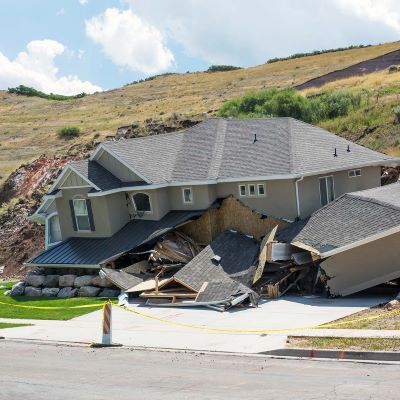Those who have first-hand experience with natural disasters know how their impact can last well after immediate trouble has passed. Once you navigate the hurdles nature has thrown your way, attention promptly turns to getting everything back together so you can fully recover as quickly as possible. We often emphasize the preventative actions we can take in preparing for severe weather events, but what you do after disaster strikes is just as important. Let’s raise the curtain on the road to recovery after disaster strikes.
Disaster Struck. Now What?
Before all else, make sure that your loved ones are safe. This initial period will entail checking in on friends and family and seeking out temporary lodging if needed. Once you’ve secured your community and needs, you can begin the process of physical and financial recovery.
- Assess the Damages: If it is safe to do so, go around your house and evaluate any property damage incurred by the event. Amidst such an emotionally charged time, it will be helpful to document and keep track of all the damages by taking pictures and writing down notes.
- File a Claim with Your Insurance: The next step is to file a home insurance claim as quickly as possible, since there will likely be an influx of claims from your area that can put a strain on the insurance company’s resources. You can supplement your claim with the photos and documentation you collected during your initial assessment of the property. After submitting your claim, the insurance company may send a claims adjuster to conduct an examination of the property.
- Meet with a Claims Adjuster: In preparation for the adjuster’s visit, collect any documents that may be useful in an assessment including receipts and estimates for repairing items that were damaged. While you wait, assess and address any damage that may cause additional issues, such as covering exposed parts of the house and removing water-soaked carpeting as these temporary repairs can be included in your future settlement. Although not required, it is a good idea to be present during the visit so that you can answer any initial questions and ensure that the adjuster hasn’t missed anything. You can also use this time to ask the adjuster about next steps and expected timelines.
The period following the adjuster’s visit can be a long and drawn-out period of waiting, so make sure to respond promptly to any outreach from the insurance company in case there are questions delaying your claim. If you haven’t heard back from the adjuster in a while, follow up to see how the case is progressing.
What About Renters?
For renters, the process of filing a claim looks similar. While renters are typically not responsible for financing repairs to the property after a disaster, they do need to replace any belongings that were damaged. Documenting the damage and estimating costs will be more focused on personal items than the property itself, but renters still need to file an insurance claim that may require an adjuster visit.
The Reality of Insurance Coverage
While the process of filing a claim after a disaster is straightforward, actually receiving support from your insurance company can be a complicated and frustrating experience as you manage payment of deductibles and address coverage gaps.
For larger claims, it can take 30 days or far longer to secure your settlement (hence why we recommend filing your claim as soon as possible). On top of that, most policies require a deductible you must pay before insurance coverage kicks in. Typical homeowners and renters insurance deductibles are in flat amounts but special supplemental insurance coverage for things like hurricanes or flooding can have deductibles that are 1% to 5% of the property’s value. In an extreme example, a $600,000 home can require you to pay as much as $30,000 out of pocket before receiving support from insurance.
How Recoop Works After a Disaster
Recoop Disaster Insurance is designed to be a fast and flexible supplement to your insurance that works for you. Securing support from Recoop after a declared disaster is done in two easy steps:
- Begin your claim by clicking the ‘FILE A CLAIM’ button at recoopinsurance.com, or by calling Recoop Customer Service at 877-2RECOOP (877-273-2667)
- Submit pictures of the damages to your property and belongings
Upon review, Recoop will approve cases that meet all qualifications and deposit up to $25,000 into an account of your choosing. This quick, flexible recovery cash can be crucial in helping you pay those deductibles to jumpstart your insurance coverage or funding temporary lodging or anything else you need to help your family weather the aftermath of a disaster. And unlike traditional programs, Recoop covers multiple perils including hurricanes (with storm surge), wildfires, tornadoes, earthquakes, gas explosions, winter storms or dust storms. Supplemental disaster insurance like Recoop can help resolve the gaps in traditional insurance coverage and connect you to the help you need when you need it.

